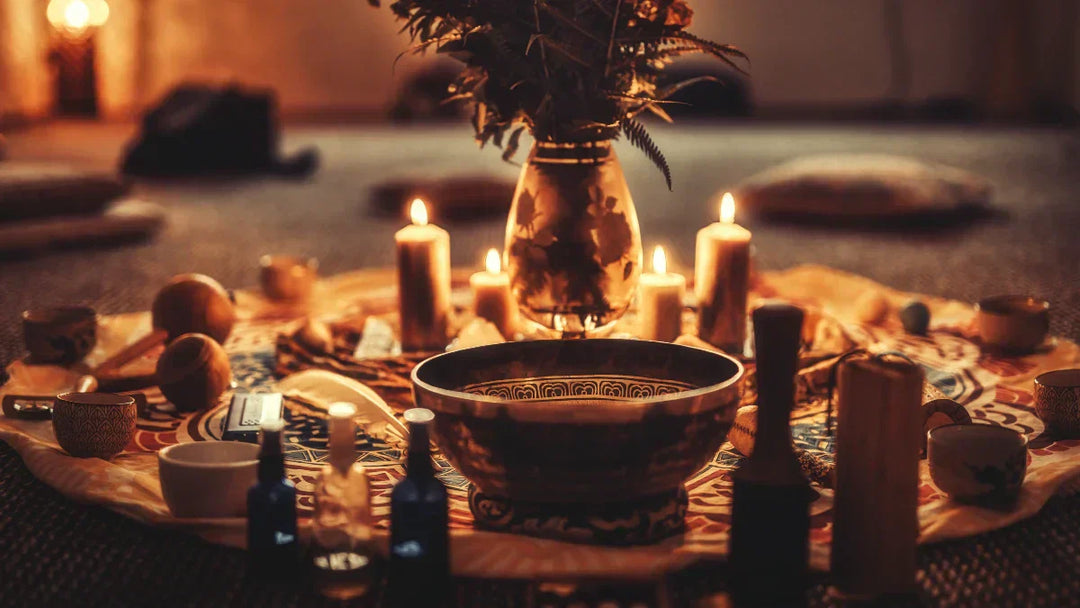Apotropaic or "warding" magic dates back to some of the earliest human civilizations. Warding magic is protection magic. Historically, this magic has been invoked through rituals, incantations, and symbols with the motive of "warding off" or "turning away" evil or any harmful energy.
One of the oldest perceived threats was that of the evil eye. Protection magic appears in early Mesopotamian texts in response to Evil Eye. Although it is unknown when this concept first originated, many historians believe it first took hold during these early civilizations and eventually spread to the rest of the world. The Evil Eye is commonly considered a form of negative energy. It can be imparted through a gaze that can inflict those within sight with negative consequences, from minor pain, bad luck, misfortune, and even death. The evil eye can cast negative energy on people, animals, and crops. The Evil Eye has been associated with witchcraft, and in other traditions, the Evil Eye is believed to be something that anyone can give, even if unintentional.
Warding or Protection Magic found its place amongst the Europeans, particularly in the Middle Ages when the Christian church stigmatized the practice of magic and earlier pagan beliefs. This was an era when protection magic was interwoven into the daily lives of everyday people. The most common theme was the influence of witchcraft. Deeply embedded in their ideology, witches were considered a real threat, and their influence could cause irreparable harm. Superstitions held significant sway and the practice of protection magic was a common undertaking. From the early cultures of Mesopotamia, warding magic played an important role in everyday life.
Protection Against Evil in Early Culture
In Mesopotamia and other ancient Eastern Mediterranean cultures, protections against Evil Eye include incantations as well as objects and recipes that can ward off the energy of the Evil Eye. Some examples of protection precautions from this era include wiping the body with bread or rubbing the body with oils that exude protection properties.
Evidence of the belief in the Evil Eye is also bountiful in Greco-Roman culture. Classical philosophers believed that the science of sight involved energy or substance emitted from the eyes. It followed that evil energy could be emitted from one person to another when one felt envious or mean-spirited. Images in paint or mosaics depicting a suffering Evil Eye were used to prohibit the Evil Eye from entering homes and buildings. In essence, these were a form of early protection magic. Amulets or charms that would have been worn on the body depicting the "much-suffering eye" have also been found. Protective chants and gestures were recorded in classical Roman texts, such as the recommendation to spit three times after a stranger enters the home or looks at a sleeping baby.
Judaism, Christianity, and Islam all have roots in the eastern Mediterranean and Arabian world, and each contains texts and traditions that mention impacts and protections against the Evil Eye. Christian images and formulas appear in late Roman texts calling on God and Christ to alleviate the Evil Eye. The Judaic texts also recommend patterned gestures and adornment of specific colors to protect from the effects of the Evil Eye. The Hamsa is a widely recognized symbol, even in western culture. This open palm holds the meaning of protection in both Judaic and Islamic traditions.
Regional Protection Practices
The earliest forms of protection magic appear in the ancient eastern Mediterranean. However, cultures and religions spread along with trade and human migration. As traditions reach new locations and grow older over time, practices may evolve, and belief systems can change. Depending on the region, shifts in ideology shaped how each region confronted supernatural threats. With the spread of the threat of witchcraft, protection magic merged into warding magic intended to hinder the influence of witches. Although the evil eye remained an ever-presiding danger, when the belief in witchcraft took hold, it became the primary adversary.
Spain
Traditional practices that bring protection and ward off the influence of witchcraft are still in use in some rural regions of Spain today. Dating back to early Christianity in Spain, it is common to find bundled branches of olive or birch trees hung above windows and doorways. These bundles have likely been "blessed" during a local church service with the intent of protecting the home.
Italy
Italian warding magic took the form of carrying amulets that provide the wearer protection from evil or from the Evil Eye, known as Malocchio in Italy. One common amulet is a small work of fragile terracotta clay. If the clay amulet breaks, the wearer has been protected from evil and it's time to seek a new amulet. To prevent the influence of witchcraft, the use of the rue plant was hung above doorways, barns, and within the home,
United Kingdom
In the United Kingdom, Apotropaic symbols engraved in the Medieval Era and before are still visible above entrances to homes, barns, and public buildings. These symbols were etched or sometimes burned into doorways and fireplaces to protect those inside from evil outside influence. Some of the most common symbols include the "daisy wheel," a double 'V' to represent the Virgin Mary, and 'AM' for Ave Maria, also invoking protection from the Virgin Mary. In addition to building entrances, these symbols can be found at the entrance of caves and crags throughout the UK, as these areas were considered entrances to an underworld.
Warding against witchcraft also found its way into protection traditions. Objects from the 15th century have been found buried in homes. Witches’ bottles, shoes and other items were commonly buried inside the home's walls. Prayers and charms were written upon hidden areas of the home, and it was not uncommon to find Rowen branches above doors and in barns.
Protection Magic Today
Ancient belief systems have found their way into our modern culture. European folklore and tradition were brought to the Americas through trans-Atlantic migration beginning in the late 1400s. This contemporary American warding magic may exhibit some differences but maintains its ancient Mediterranean roots, serving to protect from evil, misfortune, and the influence of witchcraft. Because strong cultural practices continue to survive time, protection magic is still in use in almost every area of the world.
SOURCES:
Religion for Breakfast: "What is the Evil Eye"
Dr. Angela Puca: "The Evil Eye or Malocchio - Italian Witchcraft and Paganism"
Gaia: "Ancient Protection: Using Apotropaic Magic to Ward Off Evil"






Leave a comment